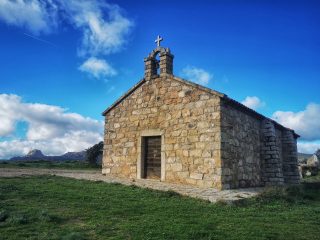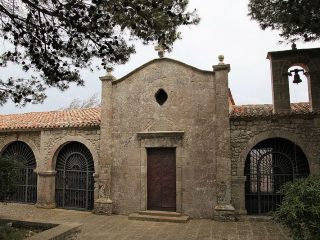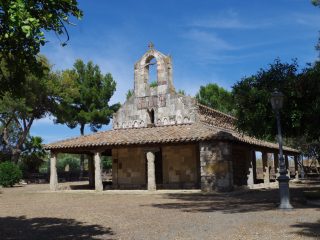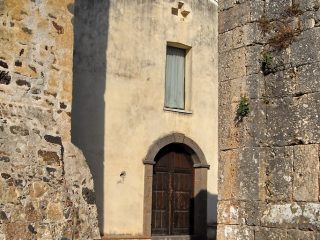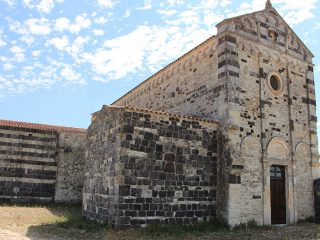The church of Sant’Anastasia stands in the upper part of the town and sits inside the Nuragic-Phoenician-Punic sanctuary of the same name. At the heart of the Nuragic sanctuary is a holy well, incorporated into a well-structured civil and religious settlement. The use of the site, for religious purposes, extends well beyond the Nuragic age, showing ongoing pagan and later Christian worship in the place.
The first Byzantine layout of the church was built on the Nuragic area and encompasses the holy well.
Its current appearance, on the other hand, dates to the XV century. The interior, with a single apse, is split into two naves with Gothic pointed arches. The structures are created with exposed stone and Roman architectural elements, reclaimed material probably already used for the original layout.
The structure has a simple facade, surmounted by a double bell gable which still has the original bell.
The building preserves the seventeenth-century wooden sculptures of the Crucifix and Sant’Anastasia, part of the floor in stone slabs and a baptismal font dating back to the Sixteenth century.







